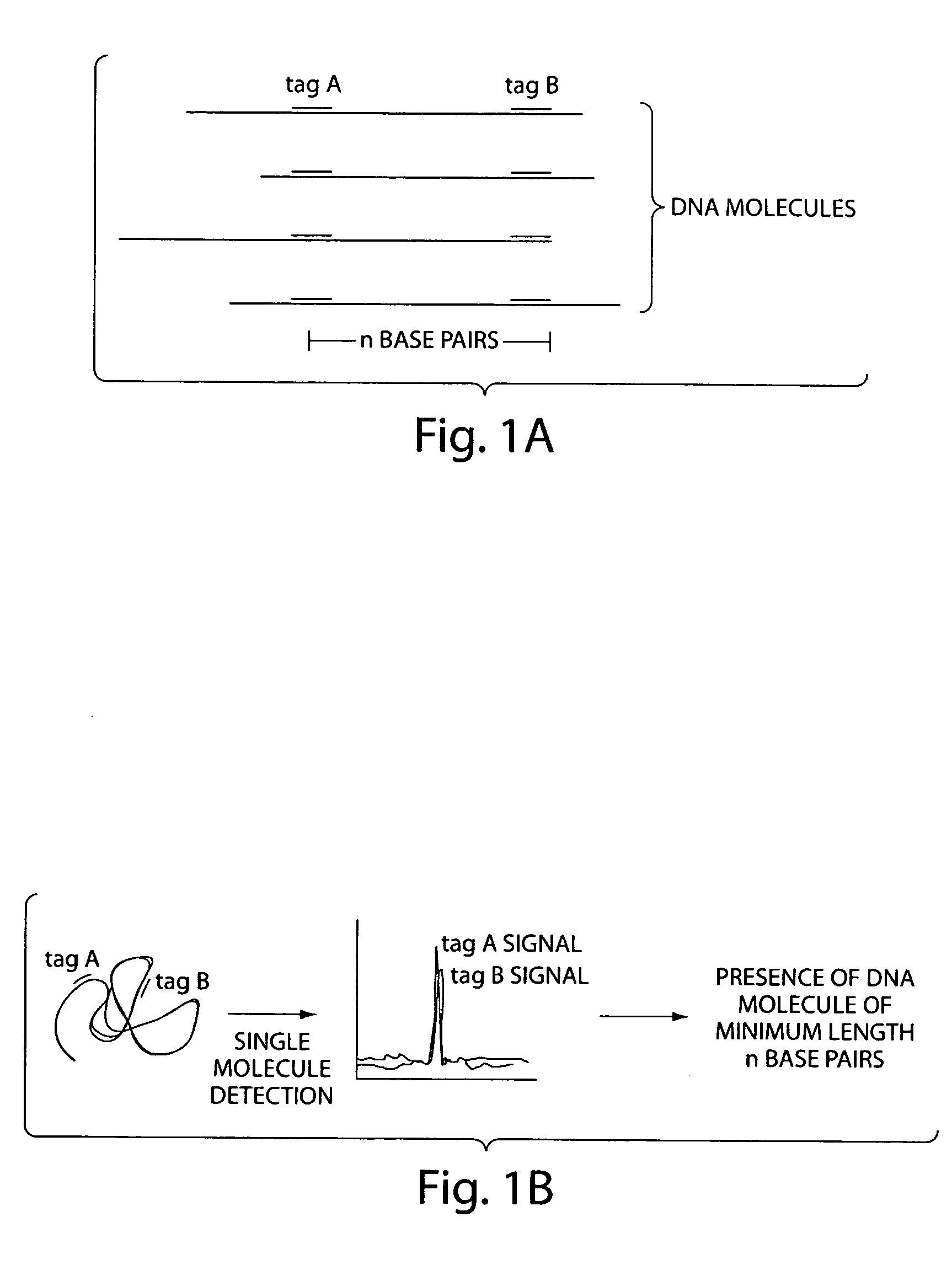Methods for detection and quantitation of minimum length polymers
a polymer and minimum length technology, applied in the field of polymer determination, can solve problems such as unfit samples for further manipulation or analysis
- Summary
- Abstract
- Description
- Claims
- Application Information
AI Technical Summary
Benefits of technology
Problems solved by technology
Method used
Image
Examples
Embodiment Construction
[0031] The invention uses coincident detection of two or more sequence-specific probes placed along a polymer at specific sites (i.e., target sites) to indicate the presence of a specific polymer of minimum length in a sample, where the minimum length is defined by the separation of the target sites along the polymer. Furthermore, the levels of coincident signal detected can be used to quantitate the amount of a specific polymer of minimum length in the sample.
[0032] Generally, a population of polymers is exposed to at least two distinguishable and detectable probes for a time and under conditions sufficient to allow the probes to bind to the polymer at specific target sites. The probes are designed to bind to target sites that are separated by a known distance. Accordingly, the minimum length of the polymer is predetermined by the choice of probes and the spacing between their respective target sites. Once the probes and polymer are incubated together for a time and under conditio...
PUM
| Property | Measurement | Unit |
|---|---|---|
| length | aaaaa | aaaaa |
| fluorescent | aaaaa | aaaaa |
| volume | aaaaa | aaaaa |
Abstract
Description
Claims
Application Information
 Login to View More
Login to View More - R&D
- Intellectual Property
- Life Sciences
- Materials
- Tech Scout
- Unparalleled Data Quality
- Higher Quality Content
- 60% Fewer Hallucinations
Browse by: Latest US Patents, China's latest patents, Technical Efficacy Thesaurus, Application Domain, Technology Topic, Popular Technical Reports.
© 2025 PatSnap. All rights reserved.Legal|Privacy policy|Modern Slavery Act Transparency Statement|Sitemap|About US| Contact US: help@patsnap.com



